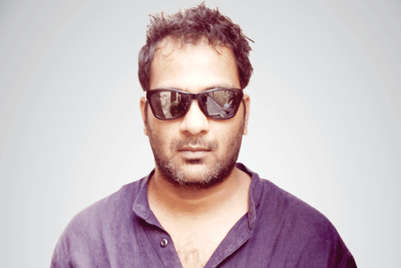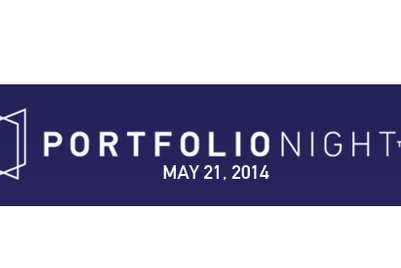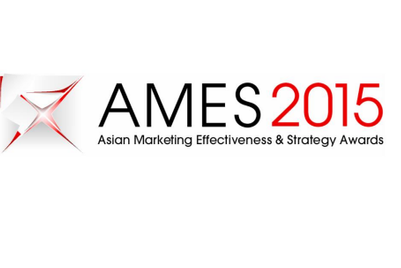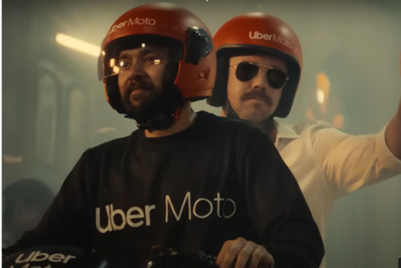
How did you get into advertising?
When I was 19, I went for a two-month internship to TBWA in Delhi. I was quite fascinated with advertising. The ‘One Black Coffee’ ad for Ericsson was one that I really loved. Also, when All my friends had gone for a vacation during our summer holidays and it was also extremely hot and I didn’t have an AC. My dad knew the owner of TBWA (Anthem) at that time and he got me the internship. So, I went there and it was good fun. I did all sorts of nonsense like taking films to clients. They told me that I could claim for auto travel and I was really excited and thought it was really cool.
After that, like any other 19 year-old, I thought I had my life set. I’d planned to complete graduation and follow it by a course at IMC (International Management Centre) to complete my 16 years of education needed to go abroad to study. I had given the entrance exam for IMC and thought I’d done pretty okay. But I didn’t get in. It seemed like all my dreams had come crashing down and I didn’t know what to do. At that time, I was disillusioned. Then a friend of mine who was a ‘planning intern’ at Lowe Delhi was looking out for more interns. She kept nagging me to look for people. I was so disillusioned that I joined her to help in the planning department for four days. I joined under a man called Anand Desai. I was helping by counting tally marks for 14,000 questionnaires for those four days.
Once that period got over, I continued under him as an intern in the planning team. At the same time, I was interested in getting into the creative side. There was this writer called Ramona Ganapathy (who now works for Lintas Bangalore), and she gave me a copy test. Three months after she had given the test, I hadn’t submitted it because I was doing bits and pieces of everything. Then one day she told me if I didn’t submit the copy test in the next few days, I needn’t submit it ever. I obviously gave the copy test and was hired as an intern in the creative team. I was then an intern for two and a half years. At that time there was a lot s*** going on in Delhi and I wasn’t hired for various reasons.
Then I met Balki and fought for my job. He hired me in Delhi in 2002. I joined Lintas Delhi on 19 June 2000 and got confirmed in October 2002. I think I must be the ‘longest serving intern’ in the history of Lowe Lintas. I think I became chief executive trainee at that point of time. I worked under Ramona before she moved to Bangalore. I also worked under Pradyumna Chauhan.
What made you shift to Mumbai?
I got a bit tired of Delhi in 2005 and came to Mumbai three days after the big flood (26 July).
Delhi was very good and I have no complaints from there, but beyond a point I was not being able to do what I wanted to do there. I had this whole fascination of Mumbai and its people and so I moved here. People had warned me about moving here as it’s a difficult place to be in. Additionally, five years after working in Delhi I was moving out of my comfort zone. I knew everyone and knew how to get things done there and I had to break that system. A lot of the persuasion to move to Mumbai came from my girlfriend, who is now my wife. She thought it was a correct decision for me to make. I came to Mumbai and worked under Nikhil Rao (who now owns Jamic Films) till 2008 or 2009. After he left, I worked with Balki directly.
What brands did you work on at the start of your career?
In Delhi, my profile allowed me to work on anything. It wasn’t that I was doing important work, but at the same time I helped with almost every account. In Delhi, my biggest work and accomplishment according to me was cracking the ‘Let’s go’ campaign for the launch of the Maruti Alto in 2002 along with my partner. That was quite a landmark campaign for me as the brand still uses the line ‘Let’s go’. I still feel the brand didn’t milk the line fully. Lots of other little pieces of work were created in Delhi. But then the work wasn’t going out and that’s where the frustration was created.
You always have these levels in every field… At first you want fellow trainees or peers to appreciate. Then you want your senior to appreciate, before your super boss does it and then the client. After you pass all these highs you want the ad to be released and want people to talk about it. That I think wasn’t happening in Delhi. I didn’t have the time and energy to wait for things to change and that’s why I moved to Mumbai.
When I moved to Mumbai I worked on the Idea campaign. Basically, the first commercial of Idea was the one with the numbers theme. That was very good, but it was followed by stuff that wasn’t up to the mark for some reason. Nikhil (Rao) got onto Idea two months before I did. He was looking for people and my art partner who had worked on ‘Let’s go’ got me to join the team. At that time, the brand wasn’t exactly in the best shape and wasn’t the hottest brand to work on. But we believed we could do something and then started work on it. The team has grown from four to about 30 now and the core (brand) of the team is Idea.
You said you moved out of Delhi to get your work appreciated? Was there a lack of opportunity in Delhi?
The gap is definitely becoming much thinner. I’ve loved Delhi for certain things, but I love working in Mumbai. It is a little more cosmopolitan and a better for a working professional. From the time you get out of your house, the public transport is better. It’s safe for people as well. It’s got far more different kind of people. I’d never met a Parsi in Delhi nor did I know what a ‘Bohri Muslim’ was. Mumbai is far more informal as a city. I was pretty scared when I was moving from Delhi to Mumbai as I was leaving my comfort zone.
How has the industry changed from the time you began to now?
You see things differently at different stages of your career. I just feel that clients now to some extent are backing better advertising. A lot more senior people like CEOs and MDs are getting involved. Now, it’s far more hands-on with advertising. Also, because of the internet medium and digital, people are looking for nicer stories. The product is kept at the centre of it, but it’s not the whole thing – there’s a shift and understanding that it has to be packaged in the form of a story. I think that’s a change in the industry.
Also, I don’t think advertising is the coolest profession to be in now and that’s affecting talent. Creative people are looking for fields other than advertising as the options have opened up. It is not the highest paying profession and kids these days are not ready to spend 15 years waiting in one place. Some people call them impatient, but I think that’s wrong. We were probably more impatient than our parents and the next generation is a little more than ours. If people are earning more in a field outside, they’re bound to pick that occupation. They are very clear about what they want and I think that’s fantastic. We were a little more scared.
I love young kids and I keep hiring them just for the energy they bring. They think very differently and that’s great.
But is there a lack of talent?
There is. Even if it’s not a big problem right now, I think it will be pretty soon. Advertising also has a lot of rigour involved. What they perceive advertising to be to what they have to go through in an agency, is very different. When a person writes one line 10 times to sell one product and then gets a whacking from his senior to get the line right, it gets rigorous. Further, when the senior finally thinks its fine, his super senior could then say it’s useless. After that if he crosses internal hurdles, the client then could turn him down. That’s not what a person who’s getting into advertising thinks what it’s going to be like. One has to be resilient and has to give it that due patience. So, one must hire people who love advertising. I think the talent today compared to what it was seven or eight years ago is different. It’s not for the negative but it’s a combination of the kind of money being involved and the rigour involved with it. We’re not getting the brightest people in advertising for sure.
Lowe has a stance of not participating in awards here in India. Do you think it’s ever been a negative for a youngster who wants to join Lowe?
It’s not a negative for sure. It’s an opinion and a culture we follow at Lowe. We don’t say awards are good or bad, we just don’t do awards. As an agency, we’ve made that stand very clear. The person who comes to Lowe has already made up his mind that he’s not joining for awards.
I think a creative mind wants to achieve glory and that comes from two things – either his work being appreciated by the public or from awards. Everyone wants creative appreciation. We need to boost our self esteem. A lot of people, who join us, have come in to do grand work.
There was this thing that happened when I was three-four years into my advertising career; I was getting a hair cut in Delhi. The barber had no idea I was from advertising. He stopped cutting my hair to watch the ‘Paanch matlab Coca Cola’ ad. He only resumed once it was over and told me ‘Mast ad hai’. That’s what I thought I want to do vis a vis an ad that no one has seen and wins an award.
You go tell your friends you’ve won an award - they ask for what. You say for an ad. If they haven’t seen it, what’s the point? I want feedback from the public. I think that if you can sell something to the client and he invests in your work, it’s far more solid because you’ve convinced a lot of people.
There’s no problem in doing work only for awards, but if you expect recognition within the system, it’s difficult.
Birla White Putty: Tote ko Dandruff , 2011: After years of just being on Idea, we got new brands in the team. This one we pulled off for Birla White is very special. It was great fun to do something like this for a category that was doing very functional stuff. It's one of my favourites.
Hit, 2012/'13: The work done on Hit by Subodh and team is quite exciting. Quite proud of these last two campaigns and some wonderful radio we have produced on this account.
Idea Honey Bunny, 2012: After the success of the population film, there was a lull. Our work was looking formatted, the excitement had dipped. And to make things worse the Heaven campaign didn’t do too well. The morale of the team was at an all time low. There was anger and frustration. Everyday, I wanted to quit. When we did Honey Bunny we believed in our concept and we believed if we get a great ringtone we will be back on track again. And when the film broke, it went berserk. Nothing I had done prior to this, had become such a big blockbuster.
Idea Mumbai launch, 2007: In the backdrop of political events that had sparked off debates on who is a Mumbaikar and who is not, Jaywant and I came up with this telephony idea to resolve this issue. It was challenging as for the first time we had to illustrate the idea through outdoor being the lead medium. We had ten different executions, two commercials for cinema and the works. It was probably after this campaign that my wife started believing that maybe her husband is a little creative.
Network campaign, 2006: When Jaywant (my art partner) and I came up with this script with Nikhil Rao (my cd), we never thought it was going to happen. Maybe for the first time, people outside advertising complimented me on my work. Not just the film, the print is also something we are very proud of.
IPL, 2009: Oongli Cricket Subodh and I shot around 50 commercials for this in around 5 days. It was madness. We love this kind of humour and both of us are really really proud of this work. We never forget to mention it in our better pieces of work list.
Telephone exchange, 2013: After Honey Bunny and festivals, we decided it was time to continue the What an idea series. Shishir Kapre and team came up with this gem of an idea. It had been a year since we used our brand ambassador AB and this was the first "theme" commercial without him in 6 years. It didn’t have AB and it was a single story. Two rules were broken. And that was really cool.
Kara, 2011: The job was to create a category for face wipes. We decided to kill the hanky, the conventional face wipe, 'a dirty habit'. Done by Carlos and team, what made me happy is that we did what was right for the brand.
Walk when you talk, 2008: With every passing Idea campaign, it was becoming more and more difficult to crack the next big one. Subodh Menon cracked this one. And it was the first campaign for me as the creative director on Idea. It made me very proud.
ALTO Let's Go, 2003: When Anusha Yadav (my art partner) and I cracked Let's Go, our CD Anaam Mishra, asked us to present this idea to Balki. It was our first presentation to him and we were stammering. He kept staring at us and I thought he was going to sack us. He loved it and when we walked out of his cabin, I was shivering. It was probably the best moment in my advertising career.
Idea 3G Population Control, 2011: We were going round and round in circles on this one. Carlos pulled a rabbit out of his hat. I love this one because it's twisted and edgy.
Idea festival campaign, 2012: In September 2012, Idea started airing some of the old TVCs again. It hurt our ego. It had never happened that we didn’t have anything fresh. We proactively presented the concept of secular festivals for Diwali, Eid and Christmas. Then we did Valentines Day, Holi and Raksha Bandhan. Today I feel festivals is a lovely property Idea owns along with Honey Bunny and What an Idea Sirji.
The article appeared in the issue of Campaign India dated 4 October, 2013

















.jpg&h=334&w=500&q=100&v=20250320&c=1)
.jpg&h=334&w=500&q=100&v=20250320&c=1)



.jpg&h=334&w=500&q=100&v=20250320&c=1)



.jpg&h=334&w=500&q=100&v=20250320&c=1)

.gif&h=268&w=401&q=100&v=20250320&c=1)






